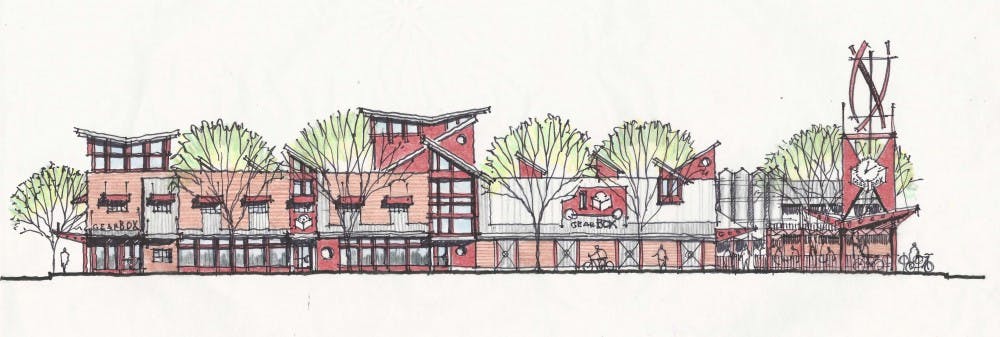Ball State wants to increase locally grown and produced food on campus, and it has given almost $300,000 to create a regional food hub.
The food hub, which was given an Academic Excellence Grant by the university, will allow farmers and producers in the area to contribute their crops to the business, bringing together the community.
Even though Indiana has more than 56,000 farms, it still gets at least 90 percent of their food from out of state, according to the National Good Food Network.
Joshua Gruver, an assistant professor in Natural Resources and Environmental Management, said Indiana might be better off growing its own food locally than depending on other states.
“Sharing food is a basic need that unites people," Gruver said. "With issues involving climate change and drought in areas of the country that typically supply the lion’s share of fruits and veggies, such as California, aren’t we better off growing our food locally than depending on states that might not be able to do it for long?”
Gruver said the diminishing food resources and unsustainable food production are major global crises for fresh food. The Indiana State Department of Agriculture is working to increase local food production for in-state consumption through food hubs and the creation of producer networks that aggregate, distribute and market local/regional foods to support wholesale, retail and institutional demand.
Sustainable Muncie, a non-profit organization that provides small business promotion, wants to become a part of the Muncie Food Hub. With the money raised for its new building, this will provide farmers a place to distribute their crops and make a higher profit.
John Fallon, executive director of Sustainable Muncie, said this is one of the most important projects in the region.
They're currently working on the plans for the building — which will be located in downtown Muncie — and will provide machine equipment and more opportunities for local producers to sell their crops, he said.
He said he suspects Indiana University Health Ball Memorial Hospital will latch on to the idea of the new hub for dietetic and health considerations.
The new Sustainable Muncie is preparing to become an operating and functioning Food Hub by spring of 2018.
This will give students and faculty opportunities to use expertise in sustainable agriculture and food systems and to provide healthy, affordable fresh food options to residents of many Muncie "food deserts" — places where there aren't healthy, fresh foods readily available. It will also increase market access for East Central Indiana farmers who have limited or no paths to markets or distribution networks.
On campus, this food hub could mean more locally grown, fresh food.
“I think it would really help the local area economically because it would cost less to ship, and also Ball State would be doing those local farmers a favor by supporting their individual businesses,” said Derek Smith, a freshman actuarial science major.
However, Max Dryer, a sophomore mathematics major, said he is skeptical of the new idea of more “fresh” food.
“As long as it can be proven that it is fresh,” Dryer said. “I have gone here for two years now, and dining tells students the food is fresh when, really, you pick it up and it looks days, even weeks, old.”
In two to four years, students should be able to see more variety of locally grown food on campus, allowing them a more affordable and healthy option.





